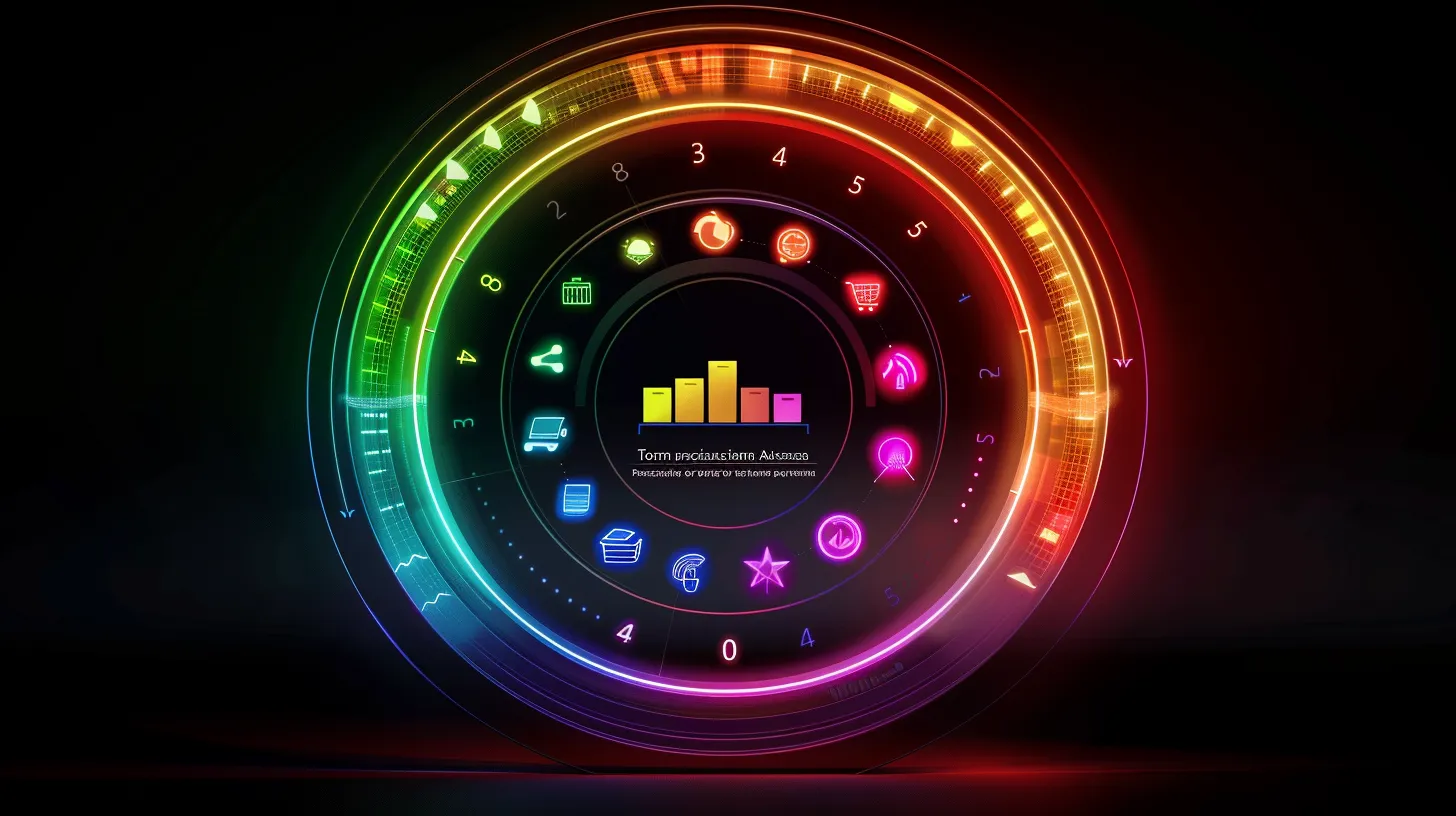What if the key to enhancing customer experience lies in understanding call center metrics? With 83% of consumers citing excellent customer service as crucial to their brand loyalty, tracking these metrics is essential. This article will cover what call center metrics are, key metrics that impact customer experience, and techniques to improve these metrics for better resource allocation and customer retention. By identifying and addressing gaps in current practices, readers will learn how to boost customer satisfaction and potentially increase retention percentages.
Key Takeaways
- analyzing key metrics improves call center efficiency and customer satisfaction
- regular training programs enhance agent skills and service quality
- understanding customer feedback drives targeted improvements in service processes
- effective metrics monitoring leads to better resource allocation and staffing strategies
- first call resolution impacts customer loyalty and reduces repeat inquiries
What Are Call Center Metrics?

Call center metrics are critical performance indicators that provide insights into the effectiveness and efficiency of customer service operations. They typically encompass a range of analytics that assess various aspects, such as response times, resolution rates, and customer satisfaction levels. Understanding these metrics helps organizations identify areas for improvement within their call center systems.
Metrics can reveal valuable information about productivity and employee performance within the call center environment. For example, tracking the average handling time allows managers to gauge how effectively agents respond to customer inquiries. Metrics also measure the impact of interactive voice response (IVR) systems, highlighting how well these technologies enhance customer interactions.
By analyzing call center metrics, organizations can refine their strategies to boost customer experience. Monitoring these indicators enables businesses to pinpoint specific challenges and implement targeted solutions. This systematic approach to performance measurement ultimately leads to better service delivery and increased customer loyalty.
Call center metrics tell a clear story about performance. Understanding these numbers shows why they matter for shaping customer experience.
Why Call Center Metrics Are Important for Customer Experience

Call center metrics play a vital role in enhancing customer satisfaction. By evaluating metrics such as response times and resolution rates, organizations can identify areas that require improvement, directly influencing how customers perceive service quality. Enhanced service leads to higher levels of customer loyalty and trust.
Efficiency within call centers is often measured through performance indicators. These benchmarks allow managers to set clear goals and standards for their teams. By understanding how metrics impact overall performance, businesses can streamline processes and optimize resource allocation, ultimately improving customer interactions.
Knowledge management is an essential aspect of call centers, as it facilitates effective communication and information sharing among agents. Tracking metrics related to knowledge usage helps organizations assess how well agents utilize available resources to resolve inquiries, which may include outsource data mining. Proper knowledge management can significantly influence customer satisfaction and service quality.
Understanding metrics sharpens the focus on what truly matters in customer experience. Now, let’s examine the key metrics that can lead to real improvements.
Key Metrics That Impact Customer Experience

Key Metrics That Impact Customer Experience
The assessment of customer experience relies on several key metrics, including Customer Satisfaction Score (CSAT), First Call Resolution (FCR), Net Promoter Score (NPS), and Customer Effort Score (CES). CSAT measures how well a company meets customer expectations, while FCR indicates the success of inquiries resolved on the first interaction. NPS gauges customer loyalty to a brand, and CES tracks the ease of customer interactions. Each of these metrics plays a crucial role in shaping positive customer experiences and reducing turnover.
Customer Satisfaction Score (CSAT)
The Customer Satisfaction Score (CSAT) is a key metric that evaluates how well a call center meets customer expectations, particularly in the realm of customer service. This score provides organizations with insights into operational efficiency and quality assurance by assessing the effectiveness of interactions across various channels, including voice and digital platforms in an omnichannel environment. By implementing automation tools to streamline these processes, call centers can enhance the customer experience, ensuring that inquiries are handled promptly and effectively, thus leading to increased satisfaction levels.
First Call Resolution (FCR)
First Call Resolution (FCR) measures the ability of an organization to resolve customer inquiries during the initial contact. High FCR rates often correlate with effective workforce management and a well-trained staff equipped with the right knowledge to address diverse issues. By improving FCR, companies can enhance customer loyalty, reduce call volume, and ultimately create a more efficient service environment that prioritizes positive customer experiences.
Net Promoter Score (NPS)
Net Promoter Score (NPS) serves as a significant indicator of customer loyalty and satisfaction within call centers. Calculated using a simple formula, NPS measures the likelihood of customers recommending the service to others. A low NPS can correlate with a higher churn rate, emphasizing the need for effective customer support and a well-trained workforce that can address customer inquiries efficiently, thereby potentially reducing the necessity for callbacks. Understanding NPS helps organizations identify areas requiring improvement to foster stronger customer relationships and enhance overall service quality.
Customer Effort Score (CES)
The Customer Effort Score (CES) is an essential metric that measures how easy it is for customers to interact with a call center. By assessing this score, organizations can identify workflows that may be causing frustration and disrupting quality management. Optimizing the CES can lead to improved customer behavior and higher revenue generation, as satisfied customers are more likely to return and recommend the service. For instance, utilizing an efficient dialer system can streamline calls, reducing the effort required for customers, thus fostering a more positive experience overall.
Customer experience relies on more than just numbers; the work of agents shapes every interaction. Turning to the next part, understanding their performance metrics reveals the true heart of service excellence.
Analysis of Agent Performance Metrics

Analyzing agent performance metrics is essential for understanding the effectiveness of call center operations. Average Handle Time (AHT) measures the efficiency of agents during customer interactions, while First Response Time (FRT) indicates the speed of initial contact. The Call Abandonment Rate highlights customer dropout, providing insights into resource allocation. Using speech analytics can enhance these measurements, ultimately improving service reputation and customer intelligence.
Average Handle Time (AHT)
Average Handle Time (AHT) is a crucial metric that reflects the duration agents spend resolving customer inquiries. Research indicates that reducing AHT can significantly improve customer satisfaction, as it often leads to faster issue resolution. In a cloud computing environment, strategies to streamline processes, such as utilizing integrated communication tools that collect customer email addresses, can further enhance efficiency and ultimately boost the overall customer experience.
First Response Time (FRT)
First Response Time (FRT) is a crucial metric in the call center industry that measures the speed at which agents respond to customer inquiries. For call center managers, monitoring FRT is essential for enhancing overall call center operations and improving customer experience metrics. By utilizing contact center analytics to track and analyze FRT, organizations can identify bottlenecks in their process, allowing for the implementation of effective strategies that minimize wait times and ensure prompt service, leading to higher customer satisfaction and loyalty.
Call Abandonment Rate
Call abandonment rate is a critical metric that measures the percentage of inbound calls that customers disconnect before reaching an agent. High abandonment rates can signal issues within the call center, such as long wait times or insufficient staffing, leading to negative experiences for call center customers. Utilizing advanced call center software and effective contact center reporting can help organizations identify patterns in abandonment, allowing managers to adjust resources accordingly and improve call center quality for enhanced customer satisfaction.
The numbers alone tell part of the story, but they do not speak of the heart of the matter. It is in the operational metrics where the true influence on customer experience can be found.
Operational Metrics and Their Influence on Customer Experience

Service Level Agreements (SLAs), Average Speed of Answer (ASA), and call volume trends are crucial operational metrics that directly influence customer experience in inbound contact centers. SLAs set expectations for response times, while ASA measures the promptness of assistance. Analyzing call volume trends enables organizations to adjust staffing effectively, ensuring optimal service delivery. Understanding these metrics is essential for enhancing overall service quality.
Service Level Agreements (SLAs)
Service Level Agreements (SLAs) are crucial for ensuring accessibility and timely responses in call centers. By clearly defining expectations for routing calls and evaluating performance against specific metrics such as response time and call resolution length, organizations can enhance job satisfaction for agents and improve customer experiences. Implementing well-structured SLAs enables call centers to maintain consistent service quality, ultimately fostering positive relationships with clients while addressing common pain points related to service delays or inefficiencies.
Average Speed of Answer (ASA)
Average Speed of Answer (ASA) is a critical operational metric that measures how quickly a call center responds to incoming consumer inquiries, directly impacting customer experience and retention rate. In the retail sector, efficient ASA can significantly reduce complexity in managing customer expectations, especially as consumer behavior shifts towards remote work environments. By consistently monitoring and improving ASA, organizations can enhance their service delivery, ensuring customers receive prompt assistance that fosters satisfaction and loyalty.
Call Volume Trends
Call volume trends serve as a critical operational metric for call centers, providing insights into customer demand during various periods. By analyzing these statistics, supervisors can identify peak times and adjust staffing levels accordingly, ensuring optimal resource allocation. This proactive approach enhances each conversation, ultimately shaping the customer’s perception of service at every touchpoint.
Operational metrics set the stage for understanding how customers feel. Now, it is time to discuss practical techniques that can improve those numbers and create an even better experience for every caller.
Key Takeaways on Essential Call Center Metrics for Service Quality

Enhancing call center metrics for better customer experience involves several key techniques. Implementing regular training programs improves onboarding processes and equips agents with essential skills. Utilizing technology, such as AI for data analysis and natural language processing, can optimize performance tracking. Lastly, collecting and acting on customer feedback through sentiment analysis helps organizations address issues like busy signals, enabling continuous improvement and greater customer satisfaction.
Implementing Regular Training Programs
Implementing regular training programs within call centers significantly enhances customer engagement and ensures consistency in the quality of service provided. By incorporating techniques such as gamification, organizations can make training sessions more interactive and enjoyable for agents, promoting knowledge retention and encouraging the application of skills on the job. Data analysis should be utilized to evaluate training effectiveness, allowing managers to adapt programs based on the insights gained, ultimately driving higher customer lifetime value through improved service interactions.
- Conduct regular training sessions to enhance agent skills.
- Incorporate gamification techniques for more engaging learning experiences.
- Utilize data analysis to assess training impact on customer interactions.
- Focus on improving customer engagement and quality of service.
- Adapt training programs based on analyzed outcomes to enhance customer lifetime value.
Utilizing Technology and AI for Data Analysis
Utilizing technology and artificial intelligence (AI) for data analysis significantly enhances call center metrics, allowing organizations to identify and reduce friction in customer interactions. By employing innovative tools, businesses can collect and analyze customer feedback, pinpointing areas that impact pricing and service quality. For instance, implementing AI-driven analytics can reveal trends in customer behavior, which guides agents in delivering a more personalized experience, thereby improving overall customer satisfaction.
- Employ AI technologies to analyze customer interactions for insights.
- Identify and reduce friction points within customer service processes.
- Utilize data to adjust pricing strategies based on customer preferences.
- Enhance service quality through targeted improvements identified from data.
- Provide customers with relevant information through newsletters powered by data insights.
Collecting and Acting on Customer Feedback
Collecting and acting on customer feedback is essential for enhancing call center metrics and improving the overall customer experience. Organizations can utilize surveys and direct inquiries after interactions to capture valuable insights regarding service quality and customer satisfaction. Analyzing this feedback allows businesses to identify trends and specific areas for enhancement, ultimately leading to more effective training programs and refined service processes that address common challenges faced by customers.
As organizations refine their strategies, questions about metrics naturally arise. The answers carry the promise of deeper insights and better performance, inviting readers to explore further.
Frequently Asked Questions About Call Center Metrics

This section addresses essential aspects of call center metrics that directly impact customer experience. It will cover which metrics should be prioritized for customer satisfaction, how these metrics can drive improvements in service quality, and the common tools used for monitoring call center performance. Understanding these topics equips organizations with practical insights to enhance their customer service operations.
What Metrics Should Be Prioritized for Customer Experience?
In the context of call centers, prioritizing metrics like Customer Satisfaction Score (CSAT), First Call Resolution (FCR), and Average Speed of Answer (ASA) is essential for enhancing customer experience. These metrics provide critical insights into how effectively agents are addressing needs and managing inquiries. By focusing on these key performance indicators, organizations can identify specific areas that may require improvements, thereby aligning their service strategies with customer expectations in a more effective manner.
How Can Metrics Be Used to Improve Service Quality?
Metrics serve as powerful tools for enhancing service quality in call centers by providing data-driven insights into performance and customer interactions. Organizations can analyze metrics like Customer Satisfaction Score (CSAT) and First Call Resolution (FCR) to identify specific areas where agents may need additional training or support. By implementing targeted improvements based on these analytics, call centers can refine their processes, reduce customer wait times, and ultimately foster a more satisfying experience for clients.
What Are the Common Tools for Monitoring Call Center Metrics?
Common tools for monitoring call center metrics include customer relationship management (CRM) software, performance analytics platforms, and quality assurance systems. CRM tools help track interactions and manage customer data, allowing organizations to gather insights on customer needs and preferences. Performance analytics platforms offer real-time reporting on key metrics, enabling managers to quickly identify areas for improvement and make data-driven decisions to enhance service quality.
Now that the basics of call center metrics are clear, it’s time to see them in action. Real-world examples reveal how effective strategies change outcomes and drive success.
Real-World Examples of Successful Metric Implementation

A well-known telecommunications company recently adopted a comprehensive approach to call center metrics by implementing a robust analytics system. This allowed them to track Customer Satisfaction Scores (CSAT) in real-time, leading to targeted training for agents based on immediate feedback. As a result, they experienced a noticeable increase in customer loyalty and satisfaction.
Another financial services organization utilized First Call Resolution (FCR) metrics to assess their agents’ effectiveness at resolving requests during the initial interaction. By analyzing FCR data, the company identified specific areas where staff needed additional training. This focus on improving first contact resolutions led to a significant reduction in repeat calls, enhancing overall efficiency.
A retail corporation took advantage of Average Speed of Answer (ASA) metrics to streamline their call center operations. By monitoring ASA trends, they ensured adequate staffing during peak times, significantly reducing customer wait times. The adjustments not only improved customer experience but also increased the overall performance of the call center team:
- Telecommunications company enhances CSAT through analytics.
- Financial services improves FCR leading to fewer repeat calls.
- Retail corporation optimizes ASA for reduced wait times.
Successful metric implementation reveals what works and what doesn’t. Next, the focus shifts to essential practices for monitoring these metrics effectively.
Summary of Best Practices for Monitoring Call Center Metrics

Organizations should prioritize key call center metrics such as Customer Satisfaction Score (CSAT), First Call Resolution (FCR), and Average Speed of Answer (ASA) to enhance performance. These indicators provide critical insights into how effectively the call center addresses customer needs and expectations, helping to identify areas for improvement.
Regularly analyzing call center performance metrics ensures that operations align with customer service goals. By monitoring these metrics consistently, businesses can detect trends and adapt strategies, leading to more efficient service delivery and improved customer interactions.
Investing in training programs for agents based on metric insights promotes a skilled workforce that can resolve inquiries efficiently. When call centers leverage data-driven strategies, they can foster a positive customer experience, resulting in increased loyalty and satisfaction.
Frequently Asked Questions
What are the primary call center metrics to monitor for improvement?
To enhance call center performance, monitoring key metrics such as average handle time, first call resolution rate, customer satisfaction scores, and abandonment rates is essential. These indicators drive informed decisions for operational improvements.
How do call center metrics influence overall customer satisfaction?
Call center metrics, such as average handling time and first call resolution, play a critical role in shaping overall customer satisfaction. Efficient metrics lead to quicker problem resolution and enhance customer retention, making them essential for service quality.
What are the best techniques to enhance customer experience metrics?
Enhancing customer experience metrics involves implementing personalization strategies, gathering frequent feedback, streamlining communication channels, and leveraging data analytics to assess customer interactions. These techniques help identify areas for improvement and foster customer loyalty.
How can organizations analyze agent performance effectively?
Organizations can analyze agent performance effectively by implementing key metrics, utilizing customer feedback, monitoring call resolution rates, and integrating performance management software to provide actionable insights and foster continuous improvement.
What are real-world examples of successful call center metric implementation?
Successful call center metric implementation includes companies like Amazon, which tracks Average Handling Time to improve service speed, and Zocdoc, focusing on First Call Resolution to enhance customer satisfaction and reduce repeat calls, demonstrating positive business impacts.
Conclusion
Understanding call center metrics is essential for enhancing customer experience and satisfaction. By tracking indicators such as Customer Satisfaction Score (CSAT), First Call Resolution (FCR), and Average Speed of Answer (ASA), organizations can identify areas that need improvement and implement effective strategies. Regular analysis of these metrics fosters a skilled workforce capable of addressing customer needs promptly and efficiently. In an increasingly competitive landscape, leveraging these insights leads to stronger customer relationships and drives long-term loyalty.







